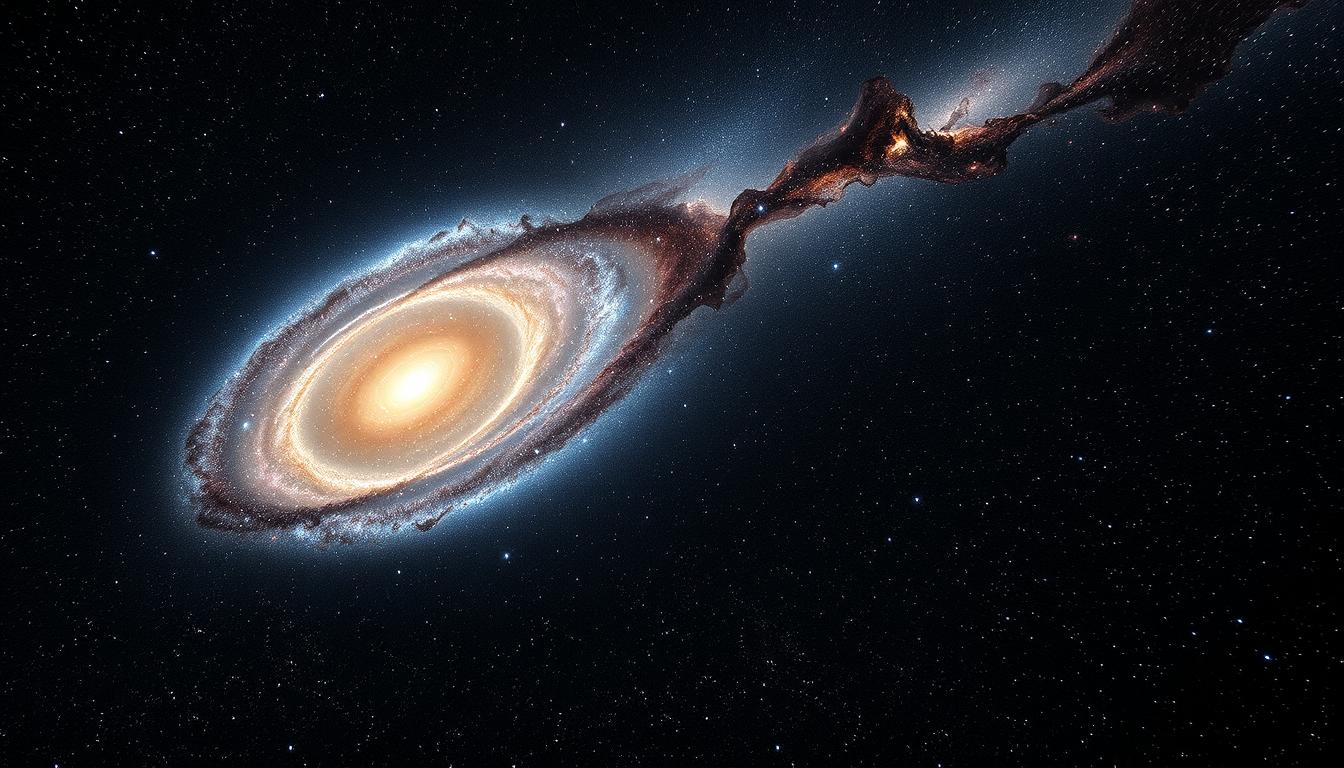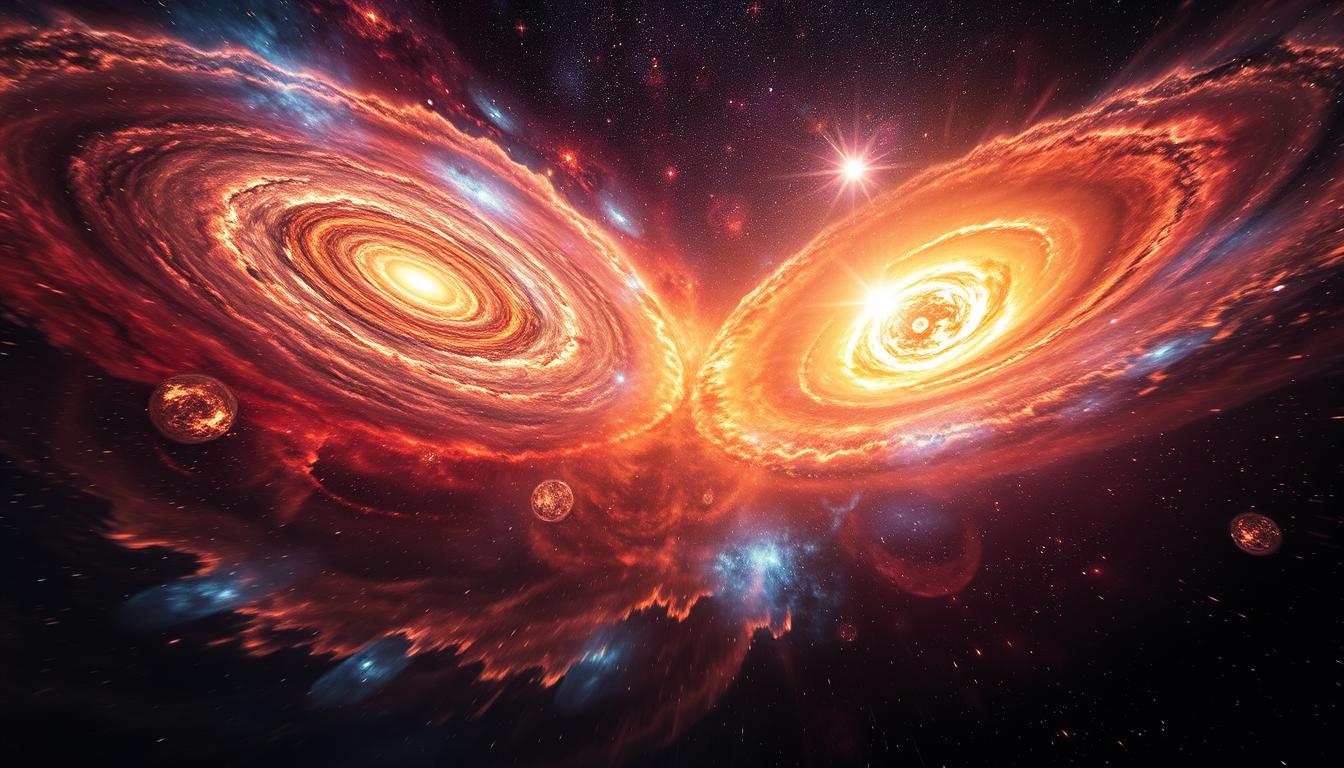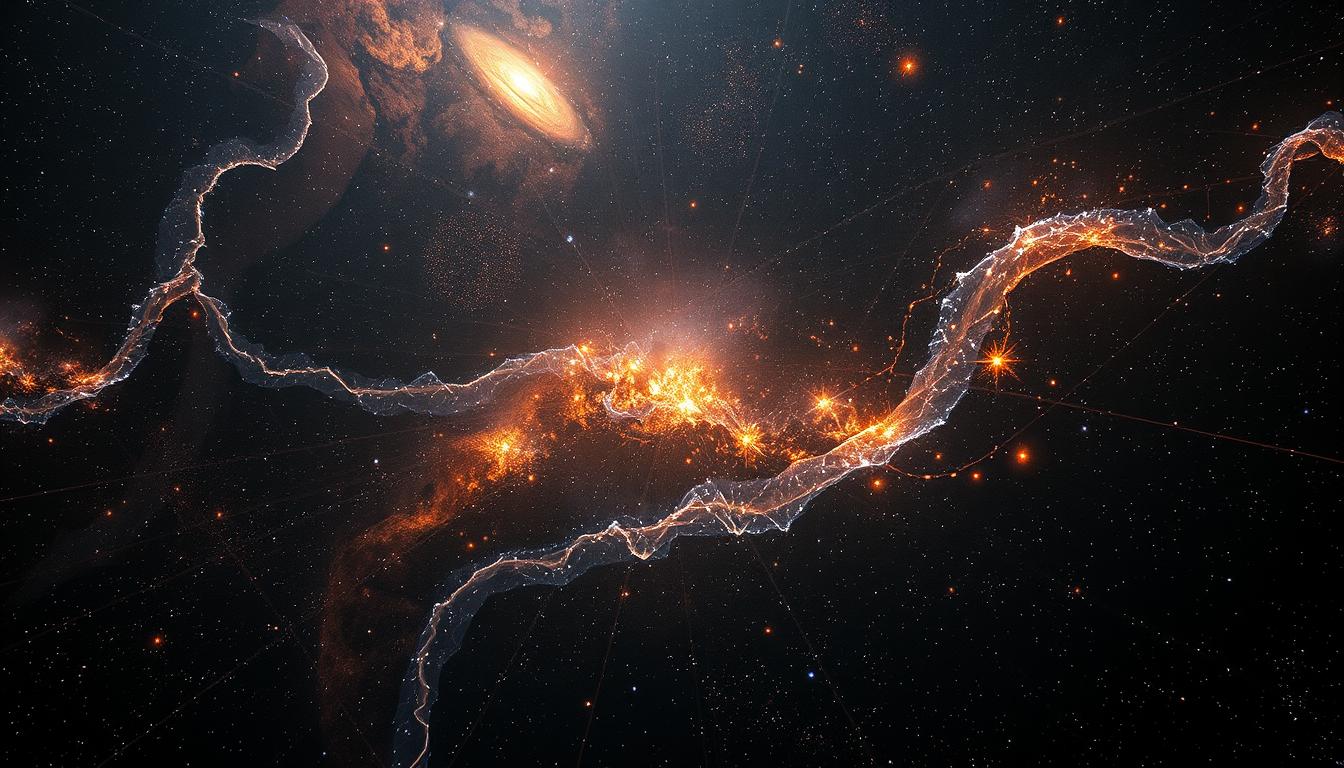I had a lengthy article about how big is the observable universe and what is the observable universe previously. In both of these articles, while I was explaining the main topic, I briefly touched upon what is beyond the observable universe. It’s a tough question because we don’t know. It’s time to dive into why we don’t know what could be beyond the observable universe, and what we can expect.
As you were reading both of these articles, I’m sure you also wondered if there is more to the universe than the part we can see. And what is that? The observable universe itself is 93 billion light-years in diameter with approximately two trillion galaxies, each with its own set of millions of stars, planets, and more.
Our view is limited by the speed of light and the age of the universe, which is 13.8 billion years. This creates a natural boundary called the cosmic horizon. Beyond this point, light hasn’t had enough time to reach us, leaving a mystery we can’t solve. But we can use our astrophysics knowledge to figure out what may be there.

Foundations of the Observable Universe
Before thinking about what is beyond the observable universe, let’s take a small peek at the foundations of the observable universe. This is important because if we know what created the observable universe, what was before, and what it expanded into, we may look into some credible explanations. Scientific ones that may hold some ground rather than conspiracy theories.
Today, we know the observable universe spans about 93 billion light-years in diameter, with a radius of 46.5 billion light-years. These precise measurements come from advanced tools like the Planck satellite and WMAP, which map the cosmic microwave background. The observable universe is cut by what we call the “cosmic horizon.” This is the edge – we can’t see anything beyond. The main reason for this is that the light from beyond this point hasn’t had enough time to reach us since the Big Bang. This boundary separates the observable universe from beyond the observable part.
Redshift and the speed of light have crucial roles in defining the limit of the observable universe. As the universe expands, light from distant galaxies stretches. They shift toward the red end of the spectrum.
Cosmic Expansion and the Big Bang
How did the universe grow from a single point to its vast size today? The answer is the Big Bang, the event that sparked cosmic time and expansion. There was nothing before this (at least that’s what the current scientific knowledge led us to), and the universe grew from a single point. This moment set the stage for everything we see, from galaxies to the stars. This happened 13.8 billion years ago, which is also one of the reasons why the cosmic horizon is where it is. If it happened a few billion years before or after, the observable universe would be bigger or smaller.

The Role of Dark Energy and Hubble’s Law
There are many powers that play an exceptionally important role in how the universe grows, behaves, and creates new structures. One of those is dark energy and dark matter (see what is the difference between dark matter and dark energy here). Specifically, dark energy is the force that drives the universe’s expansion. Galaxies are moving apart faster than ever, the universe is growing constantly, and it is putting stars and galaxies beyond the cosmic horizon every day. We know this mostly thanks to Hubble’s Law.
Hubble’s Law states that the farther a galaxy is, the faster it recedes. This relationship is measured using redshift, where light from distant galaxies stretches as space expands.
One crucial thing about all this is that galaxies, planets, and stars are moving beyond the observable universe as the universe expands. This means that the universe must continue to exist beyond that limit. As I said before, we just can’t see it.
Exploration of What is Beyond the Observable Universe?
Now, we have some basics about the observable universe and numbers. Especially the current state – the fact that it’s still expanding. You may have some ideas already, but some other theories are going around, sometimes irrelevant to the current state. What’s real, though, is that we can speculate on the existing science (as in, the fact that the light hasn’t reached us yet). The most compelling thought is that the universe simply continues to exist as we know it.
One exciting idea is that there may be life forms beyond the observable universe that we can’t identify or even know. Within the observable universe, at some point, we can interact with possible other life forms. If they are beyond the observable universe, it’s impossible. No matter what technology anyone may have, it’s impossible.
Also, you may say that we have the standard universe we know beyond the observable universe. But that universe, both observable and unobservable, ends somewhere since the universe is expanding. If you can, somehow, catch that expansion rate and hit the wall, can you go beyond that? That is the question we try to answer mostly when we ask what is beyond the observable universe.
Observable vs. Unobservable Regions
The cosmic microwave background data suggests that the unobservable universe could be vastly larger. We say that the Big Bang happened 13.8 billion years ago, but that mostly boils down to the cosmic microwave background, the oldest light that exists. This is mostly because it’s coming from the end of the observable universe. What if the universe started way earlier, but the cosmic microwave background and other old lights we see are fragments that we can see in this part of the universe?
It’s also important to distinguish the unobservable regions into two categories. One is the part of the normal universe that keeps expanding, and the other is the wall of the universe, beyond which lies the entire universe. The second one is for another article and is a much more complicated topic that we probably can’t answer at all.
Theoretical Models and Infinite Replicas
Now we’re getting into the weird stuff. One popular idea is that the universe is infinite. If that’s true, then the observable part is just a tiny bubble in an endless cosmic sea (a different view on what I talked about above, that there is a wall to our universe). And if space goes on forever, then every possible arrangement of matter eventually repeats. That means somewhere out there, there could be another version of you. Or a whole galaxy that looks like ours but has cats running the show. This is generally discussed as the multiverse or bubble universe theory. I have articles on both of these, just click on the names to read them.
It sounds wild, and it is. But it’s also the best we can do with the data we have. The deeper we look, the more it seems like the observable universe is just the beginning of the story. What lies beyond might be infinite, strange, or surprisingly familiar.

The Cosmic Web and Its Filaments
Think of the universe as a sponge, and that you are looking at it very closely. It would look like it’s random, and it doesn’t amount to anything. But, if you zoom out far enough, what you see wouldn’t be random chaos. It would be structured. Galaxies aren’t placed randomly. They line up in threads. Scientists call this the cosmic web. It’s made up of enormous filaments of dark matter and gas. They connect clusters of galaxies on invisible strings. This cosmic web is made out of filaments, nodes, and voids. Filaments are long, thread-like structures made of galaxies and dark matter. They connect clusters, creating a network that fills the universe. Voids, on the other hand, are vast empty regions with few galaxies.
These filaments tell a story about how matter clumps, moves, and evolves. If they stretch beyond the observable edge, they might even hint at the overall shape and fate of the universe. It’s the framework for everything we know.
This cosmic web doesn’t end at the edge of the observable universe. It likely continues, stretching into the parts we can’t see. That means the structure of the universe beyond our view might look surprisingly familiar. Or maybe it turns into something else entirely. But if the pattern holds, the cosmic web gives us clues that the universe beyond is not just empty space.
Implications of Temporal Change on Cosmic Observation
Let’s talk about time, because things move a bit differently over there. How will the universe’s ongoing expansion shape what we can observe in the future? The farther out you look, the further back in time you’re seeing. That galaxy 10 billion light-years away? You’re not seeing it as it is now. You’re seeing it as it was 10 billion years ago.
So what does that mean for what’s beyond the observable universe? This means that some parts of the universe will be visible in the future. We just have to wait long enough for their light to reach us. Time isn’t just ticking forward. It’s also pulling new parts of the universe into view, as long as cosmic expansion doesn’t outpace the light trying to get here. Time changes the map of the universe. The cosmos you see today isn’t the same one someone in the far future will see.
Future Visibility Limits and Expanding Horizons
Here’s where it gets a bit sad. As the universe keeps expanding, and it’s doing that faster and faster thanks to dark energy, some parts of space will actually never be visible to us, even if we wait forever.
That’s because space itself is stretching so fast in some regions that light from there will never catch up to us. These areas are already slipping beyond our cosmic event horizon. In the future, more and more galaxies will disappear. Not because they’re vanishing, but because they’re speeding away faster than light can bridge the gap.
When we ask what is beyond the observable universe, we’re also asking how much of the past we can recover through light. And eventually, light just gets too stretched and too faint. There’s a point where observation hits a wall.
Conclusion
The main answer to what is beyond the observable universe is simple. More universe. The light gets away from us, so we are losing sight of the things we see every day to the unobservable universe. But, in the greater scheme of things, we don’t know what that part really has. There may be things we can never even imagine in far beyond, deep parts. The universe may end at some point – then, what’s beyond that?
Could the universe be infinite, with endless repetitions of galaxies and stars? How will future observers perceive the cosmos as expansion accelerates? Like in science, we will have more questions than answers every time. But at least we can have some answers to what is beyond the observable universe, since most observable parts will fall beyond that every single day.
FAQ
How do we define the boundaries of the observable universe?
The cosmic horizon is the limit of what we can see. The universe determines it for us by the distance light has traveled since the Big Bang, roughly 13.8 billion years ago.
What role does dark energy play in cosmic expansion?
Dark energy drives the accelerated expansion of space, pushing galaxies apart faster over time, as described by Hubble’s Law.
Can we observe regions beyond the cosmic horizon?
No, light from those regions hasn’t reached us yet due to the finite speed of light and the universe’s expansion.
How does time affect our observations of distant galaxies?
The farther we look, the further back in time we see, as light takes billions of years to travel across vast distances.
Could the universe be infinite beyond what we observe?
Some theories suggest it might be, but without direct evidence, it is only a question.